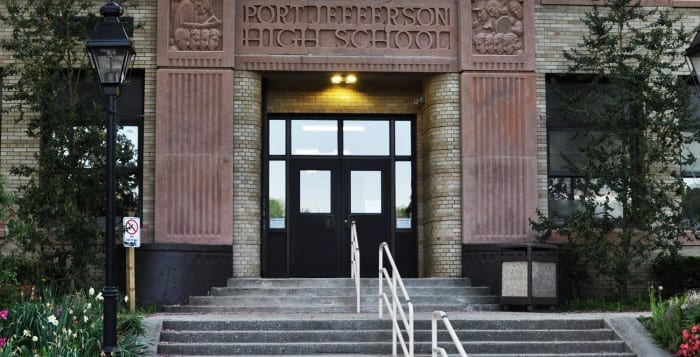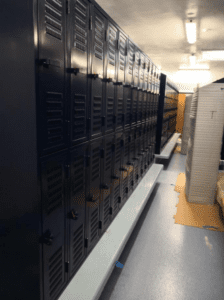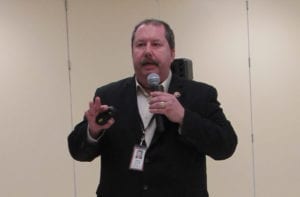A Port Jefferson Free Library event aimed at promoting inclusion and diversity achieved its goal for some but also inspired the opposite reaction from others.
The library hosted an event entitled Drag Queen Story Hour Sept. 22, during which a drag queen trained by children’s librarians reads picture books, sings songs, and leads children ages three to eight in craft activities. The event took place at the PJFL and about 100 people attended, according to library Director Tom Donlon. The organization, Drag Queen Story Hour, has chapters across the United States and conducts the events in an effort to “capture the imagination and play of the gender fluidity of childhood and gives kids glamorous, positive, and unabashedly queer role models. In spaces like this, kids are able to see people who defy rigid gender restrictions and imagine a world where people can present as they wish, where dress up is real,” according to its website.
“I think you’re going to be on the right side of history, and I’m glad to be here to see it.”
— Kyleen Burke
The library promoted the event on its online calendar as “a program that raises awareness of gender diversity, promotes self-acceptance, and builds empathy through an enjoyable literary experience.” During the event in Port Jeff Sept. 22, several protestors stood outside the library holding signs and verbalizing their opposition to exposing children to the message promoted by the event.
Donlon said the board of trustees got the idea from a patron of the library who said they had heard of the events taking place elsewhere.
“We liked it because the program was just about diversity,” he said. Donlon added the goal was not to get into gender or sexuality. He said in the lead up to the event he received many calls both in favor and against, though the program filled up completely in just five days.
“We kind of knew that people were going to be upset,” he said. “I was a little dismayed people saw it as an indoctrination.”
Donlon added he was disappointed people who elected to protest or oppose the event “co-opted” it to promote their own agenda. The social media buzz leading up to the event and the subsequent protests likely led to what Donlon and board President John Grossman each characterized as an unusually large turnout for its monthly public board meeting at the library Sept. 24, during which several community members spoke in favor of and against the program.
“I don’t know a lot about living in this community as an adult,” said Kyleen Burke, a 2008 graduate of Port Jeff schools who said she has just recently moved back to the community as an adult. “I was thrilled to learn about this program because going to school in Port Jeff schools, it was a really small district, and I watched kids who diverted from the norm in any way get bullied and not feel represented here unfortunately, even though this is, in large part a really loving, really beautiful place to grow up. So embracing this opportunity totally blew my mind of what this community could be, and represents just a tremendous opportunity to continue to embrace every single kid, and to make this a welcoming space despite what the norms might be. So thank you for wading into this water and for standing up for unpopular people. I think you’re going to be on the right side of history, and I’m glad to be here to see it.”
Others stressed their concerns about the event didn’t come from a place of hate or discrimination.
“I understand all kinds of positions, and we love people, but please don’t mess around with the kids.”
— Ruben Cruzate
Ruben Cruzate, who said he participated in the protests, said his picture and contact information had been circulated on social media, leading to harassment and attacks, he said.
“The reason I’m here is because I’ve never experienced such hate and intolerance,” he said, attributing his experience following the protests to members of the LGBTQ+ community. “I understand all kinds of positions, and we love people, but please don’t mess around with the kids.”
Children’s librarian Margaret Smith said during the meeting the event was a “joyful” occasion featuring sing-alongs and stories about inclusion.
“Thank you for your courage and for sticking with this program that was proposed, investigated and was planned,” she said.
Smith and Donlon each said the library plans to hold “story hour” events with people from other walks of life on a monthly basis going forward. While no date has been set, Donlon said the library is open to hosting Drag Queen Story Hour again if the community is interested.
This post was updated Sept. 25 to remove mention of Ruben Cruzate as a resident of Port Jeff. This post was updated Sept. 26 to remove a quote from Theresa Bendel at her request.






















